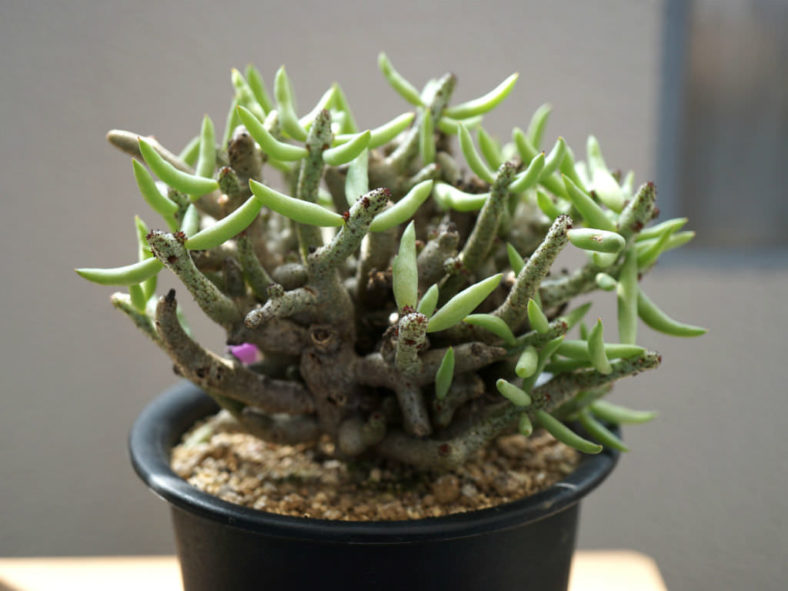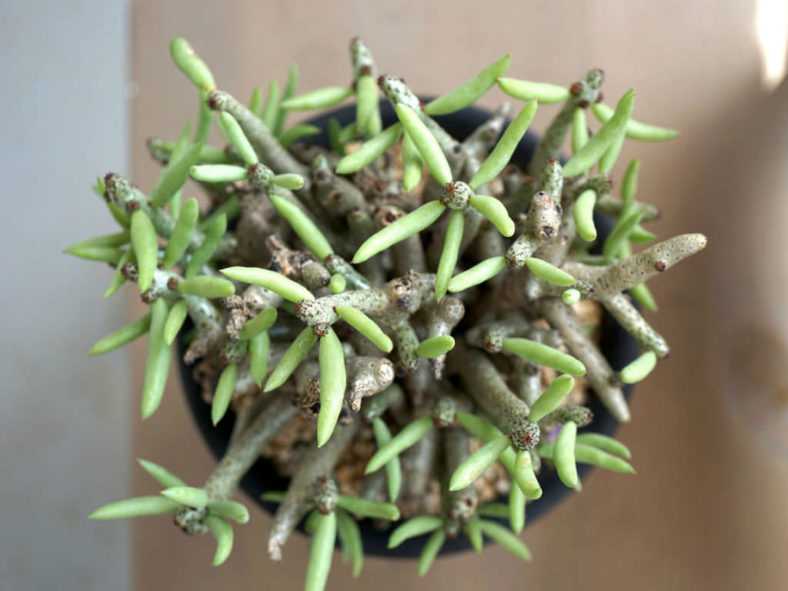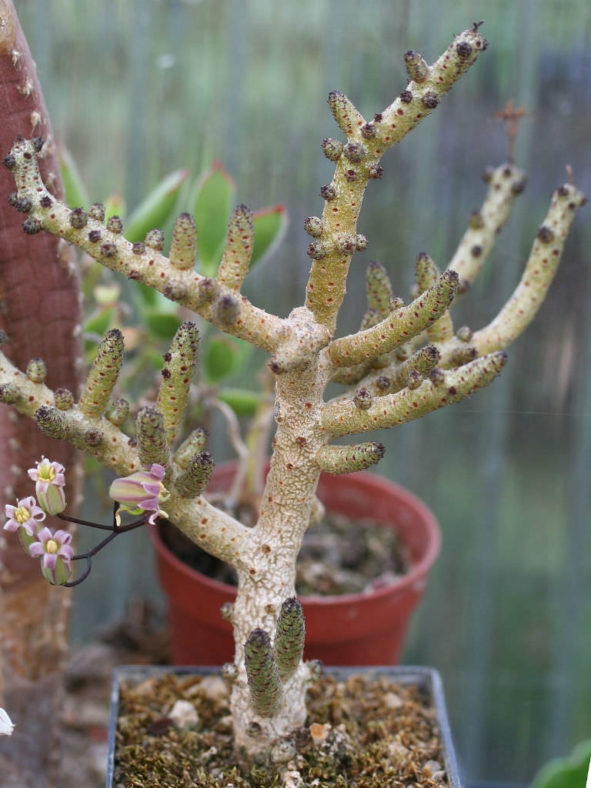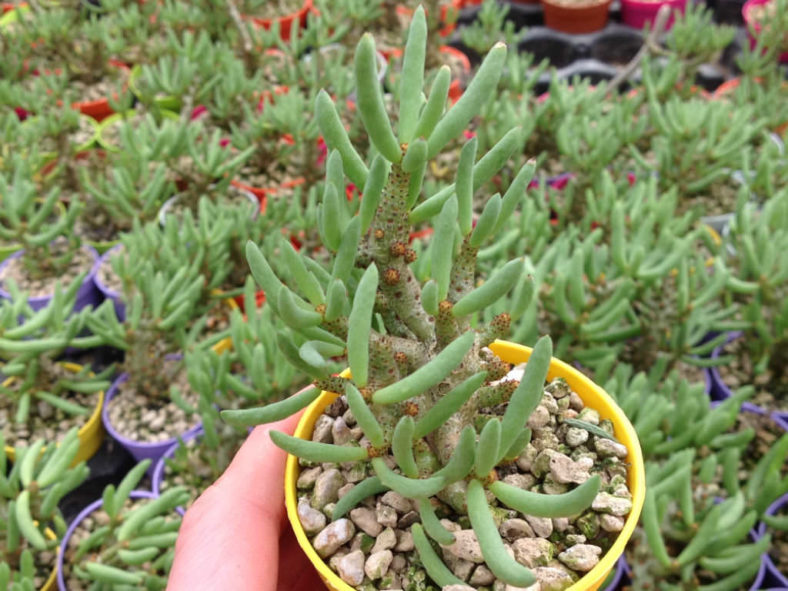Scientific Name
Tylecodon buchholzianus (Schuldt & Steph.) Toelken
Synonym(s)
Cotyledon buchholziana, Tylecodon buchholtzianus, Tylecodon bucholzianus
Scientific Classification
Family: Crassulaceae
Subfamily: Kalanchoideae
Genus: Tylecodon
Etymology
The specific epithet "buchholzianus (pronounced buk-HOLTZ-ee-AY-nus)" probably honors Reinhold Wilhelm Buchholz (1837-1876), a German zoologist and plant collector.
Origin
Tylecodon buchholzianus is native to South Africa and Namibia.
Description
Tylecodon buchholzianus is a small, winter-growing succulent shrub with a swollen, irregularly shaped stem and many erect to spreading or rarely drooping branches. It slowly grows, reaching up to 12 inches (30 cm) in height and up to 10 inches (25 cm) in width. The branches are whitish or grey-green and usually short. The older branches have peeling bark in brown flakes. It may or may not decide to produce leaves in the spring, leaving photosynthesis to microscopic leaflets on the stems. The short-lived leaves are green, almost cylindrical, and can measure up to 4 inches (10 cm) long and 0.2 inches (0.5 cm) in diameter.
The flowers are tubular, pale pink to red-purple, and appear on short petioles from mid-winter to late spring. They can grow up to 0.6 inches (1.5 cm) long.

How to Grow and Care for Tylecodon buchholzianus
Soil: A well-draining soil mix is the key to a healthy Tylecodon. Poor drainage and overwatering most commonly cause root rot in both indoor and outdoor plants.
Light: Tylecodons can survive direct sunlight exposure without problems, but they will grow beautifully in shadow.
Hardiness: Tylecodon buchholzianus can withstand temperatures as low as 35 to 50 °F (1.7 to 10 °C), USDA hardiness zones 10b to 11b.
Watering: As winter is the growing season, Tylecodons require careful watering from winter until the spring. Get the soil wet, and then wait until it is dry before watering again. In the summer, reduce watering to once per month.
Fertilizing: Use liquid fertilizer for cacti and other succulents in winter.
Repotting: You do not need to repot these plants often. You can do it when the container becomes too small or shallow.
Propagation: Tylecodons can be cultivated either by seed or by cuttings.
Learn more at How to Grow and Care for Tylecodon.
Toxicity of Tylecodon buchholzianus
Tylecodon species are adapted to avoid animal predation being poisonous. Therefore, keep them away from children, pets, and livestock.
Varieties of Tylecodon buchholzianus
Links
- Back to genus Tylecodon
- Succupedia: Browse succulents by Scientific Name, Common Name, Genus, Family, USDA Hardiness Zone, Origin, or cacti by Genus
Photo Gallery
Click on a photo to see a larger version.


